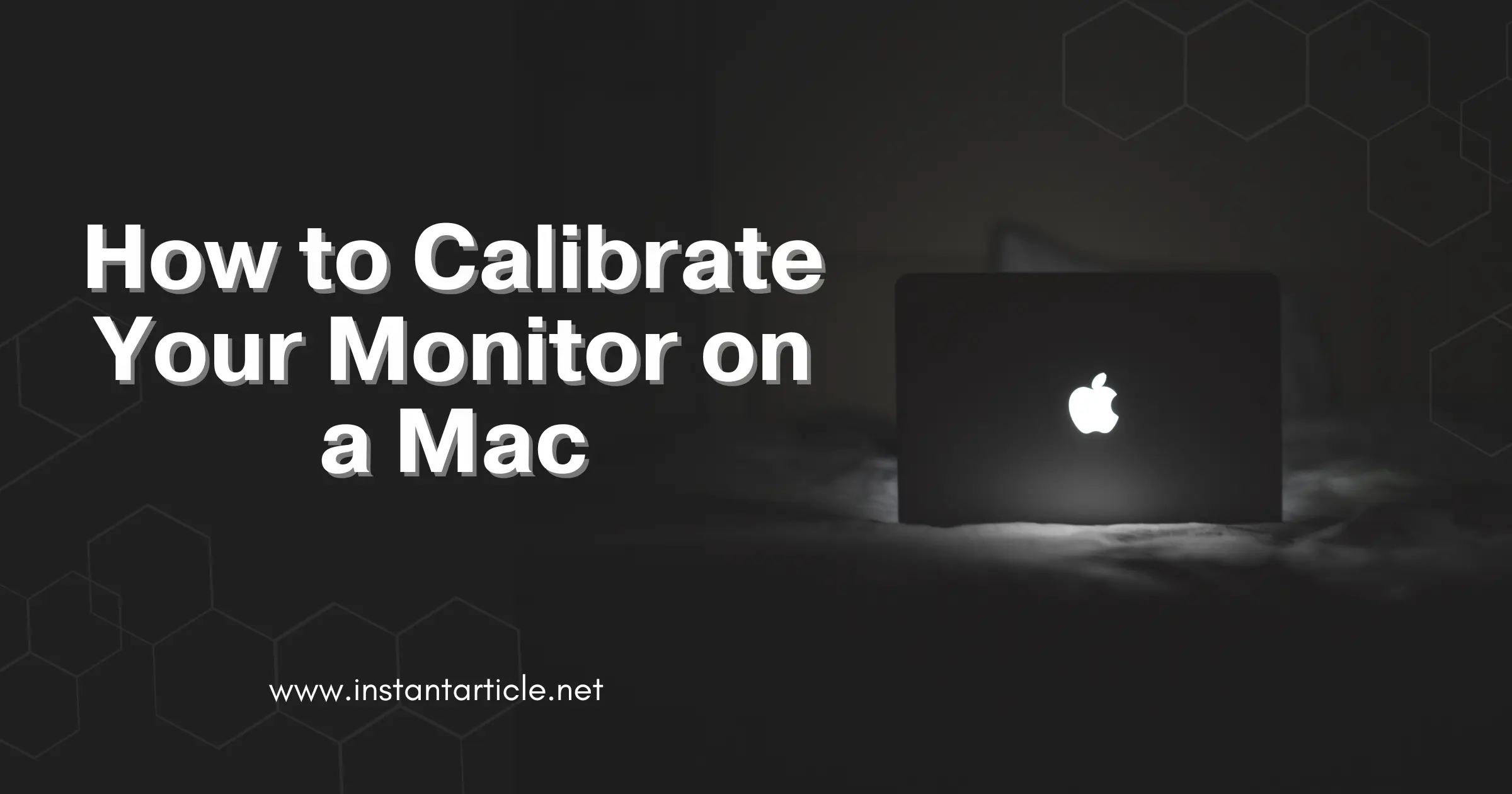Having accurate colors on your Mac’s monitor is crucial, especially if you work with photos, videos, or graphic design. Calibrating your monitor ensures that the colors are true to life and consistent. Here’s a step-by-step guide on how to calibrate your monitor color on a Mac.
Why Monitor Calibration is Important
Calibrating your monitor:
- Ensures colors are accurate and consistent.
- Improves the quality of your work in design, photography, and video editing.
- Reduces eye strain by maintaining proper brightness and contrast levels.
Personal Anecdote
When I first started working as a freelance graphic designer, I noticed that the colors in my prints never matched what I saw on my screen. After some frustrating trial and error, I learned about the importance of monitor calibration. Since then, calibrating my monitor regularly has made a world of difference. Not only do my clients appreciate the accuracy of my work, but it also saves me time and money by avoiding reprints.
Tools You Need
Before you start, here are the tools you might need:
- Mac’s Built-In Display Calibrator: This is a free tool available on all Macs.
- Hardware Calibrators: Devices like the SpyderX or X-Rite i1Display are more accurate but come at a cost.
Step-by-Step Guide to Calibrate Your Monitor Color on a Mac
1. Using the Built-In Display Calibrator
Step 1: Open System Settings
- Click the Apple logo in the top-left corner of your screen.
- Select “System Settings” (or “System Preferences” on older macOS versions).
- Click on “Displays.”
Step 2: Access the Color Calibration Tool
- In the Displays window, go to the “Color” tab.
- Click on the “Calibrate” button. This opens the Display Calibrator Assistant.
Step 3: Follow the Calibration Assistant
- The assistant will guide you through various steps. Follow the instructions carefully.
- Adjust the gamma settings to match the example shown on the screen.
- Set the target white point according to your preference or leave it at the default setting if you’re unsure.
Step 4: Name and Save the Profile
- After finishing the calibration process, name your new color profile.
- Click “Done” to save the profile. Your monitor is now calibrated.
2. Using a Hardware Calibrator
For more accurate results, you can use a hardware calibrator. Here’s a general process:
Step 1: Install the Calibration Software
- Install the software that comes with your calibrator (e.g., SpyderX or X-Rite).
- Follow the on-screen instructions to set up the device.
Step 2: Position the Calibrator
- Place the calibrator on your screen as instructed by the software.
- Ensure it sits flat against the monitor surface.
Step 3: Run the Calibration
- Start the calibration process in the software.
- The calibrator will measure your screen’s colors and brightness.
- Follow any additional prompts provided by the software.
Step 4: Save the Calibration Profile
- Once calibration is complete, save the new profile.
- Your monitor will automatically switch to this new, accurate color profile.
Enhancing Depth and Detail
A study by the International Color Consortium found that accurate monitor calibration can improve workflow efficiency by up to 30%. This is particularly important in fields like graphic design and photography, where color precision is critical. Professionals in these fields often use hardware calibrators because they provide a higher level of accuracy compared to software solutions alone. These devices take into account factors like ambient light and specific monitor characteristics, ensuring a more precise calibration.
Tips for Effective Calibration
- Warm-Up Time: Allow your monitor to warm up for at least 30 minutes before calibration.
- Ambient Light: Perform the calibration in a room with consistent, moderate lighting.
- Regular Calibration: Recalibrate your monitor every few months to maintain color accuracy.
Engage with the Reader
Have you ever printed a photo that looked perfect on your screen, only to find the colors completely off in the print? It’s a common issue that many people face. By following these calibration steps, you can avoid this frustrating problem and ensure that what you see on your screen is what you get in your prints. Give it a try and see the difference for yourself!
Frequently Asked Questions (FAQs)
It’s recommended to calibrate your monitor every few months. However, if you’re working on color-critical projects, you might want to do it more frequently, like once a month.
The built-in tool is good for basic calibration. However, for professional work where color accuracy is crucial, investing in a hardware calibrator like SpyderX or X-Rite can provide more precise results.
No, each monitor has unique characteristics, so you should create separate calibration profiles for each one to ensure accurate color representation.
Calibrate your monitor in a room with consistent, moderate lighting. Avoid direct sunlight or overly bright conditions, as they can affect the calibration process.
Ensure your printer settings and paper type are correct. You might also need to adjust your monitor brightness or use a color-managed workflow from start to finish, including using ICC profiles for your printer.
Conclusion
Calibrating your monitor in Windows 10 is a straightforward process that can greatly improve your viewing experience and ensure color accuracy. By following the steps outlined in this guide, you can make sure your monitor displays colors correctly, making your work and entertainment more enjoyable. Remember to calibrate regularly and consider using a hardware calibration device for the best results.
If you’ve tried these steps and noticed a significant difference, share your experience in the comments! Have any other tips for monitor calibration? Let us know – we’d love to hear from you.

